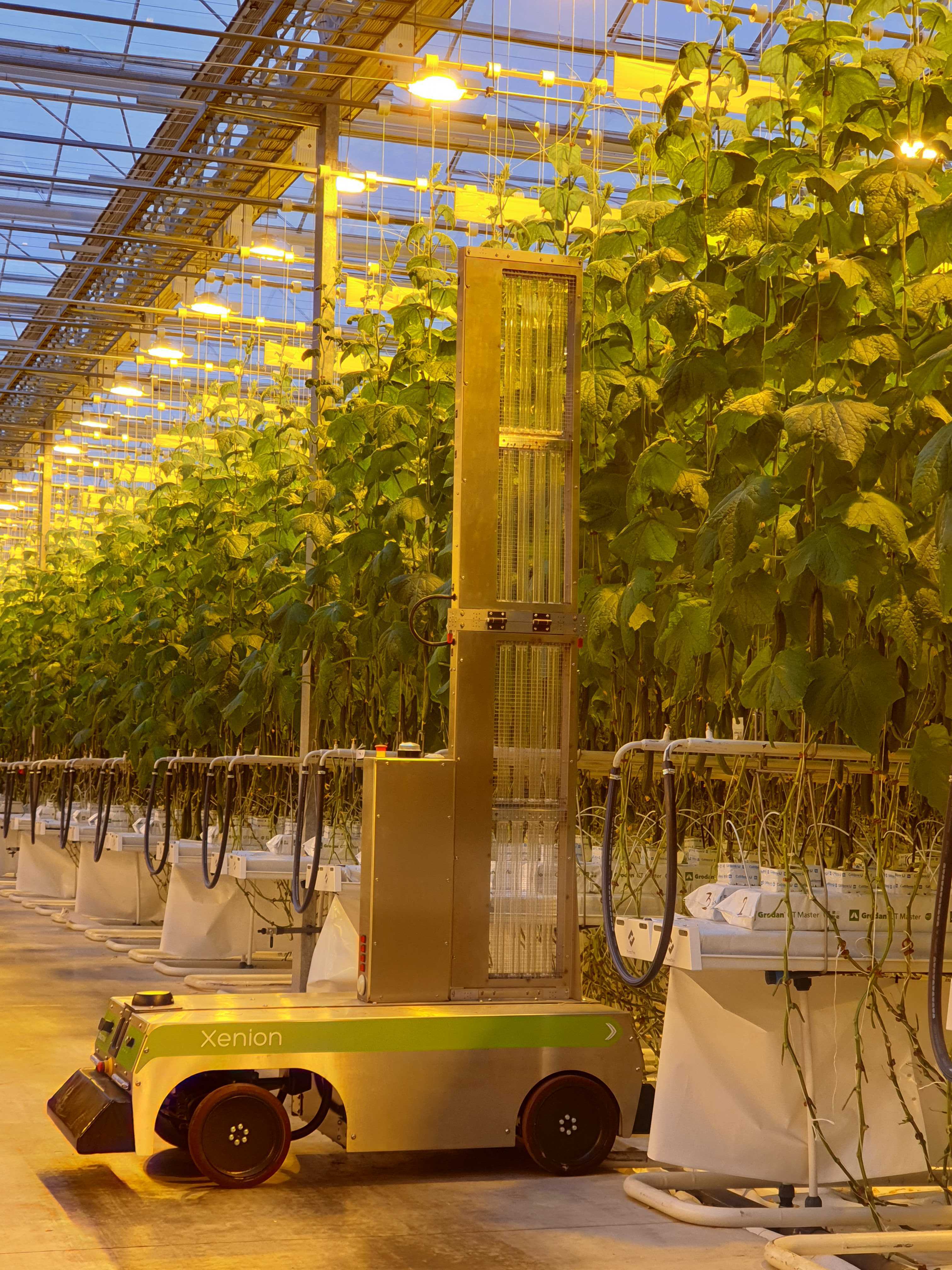While deploying UV robots at more growers worldwide, we are given more insights in the variety of growing infrastructures that exist, and the challenges that these bring in terms of automation.
For high vertical crops, like tomatoes or cucumbers, the growing infrastructure is more or less standard for automation. There is some variation in the pipe rail system (centre width or rail ends), some variation in row width and some variation between high-wire and umbrella system. But in general, there’s a pipe rail system available in every row and the environment is well structured.
For strawberries cultivated on substrate there’s a lot more variation. It starts with the ‘cover’- meaning the different types, like no cover, rain shelters, polytunnels, mini-air system, plastic greenhouse or glasshouse. Secondly the growing gutters can be suspended or installed on poles. Thirdly the variation in pipe rail systems is enormous: no rails, one pipe below every gutter, a pair of rails in every row, a pair of rails underneath every second gutter, one pair of rails per bay, … not to forget the different centre widths of the rails. All these variations together require a different configuration of any robot used for strawberries, in practice this means that it implies other wheels, other axles, a side shift arm system, …).
Another variation is the cultivation system itself: next to a traditional gutter system on fixed distances, there’s a trend towards swing systems, hoist systems and even staggered systems to get more plants on the same area. These systems are developed to have more gutters per bay. For the swing system, one half of the gutters can be shifted sideways (left and right) to make sure the workers can walk in between the rows without damaging the crop. The hoist system has the same purpose, only the growing gutters are lifted and lowered alternately so the workers can walk below the lifted gutters making sure they have sufficient space to perform maintenance tasks to the crop. The staggered system or staggered swing system combines both previous systems. The gutters are placed on a different height and can be shifted sideways.
One of the last major differences for strawberry infrastructure is the position of the heating tubes below the gutters. At some growers they’re positioned quite closely to the gutters, at other growers they’re hanging somewhere 40-50cm below the gutter, which limits the maximal dimensions of a robot.
Making sure a fully autonomous robot working correctly in all of these environments is not an easy task. Not only is the reachability of the crop and ease of navigation something to take into account, it all needs to happen within the boundaries of any safety regulations for autonomous vehicles that apply. In the end, the main goal is to make sure the right dose is applied to the plants within all variations in infrastructure. Lots of efforts, trials, hardware validations and software updates led to the product available now: the UV-C robot Lumion, adaptable for different kinds of infrastructures.

